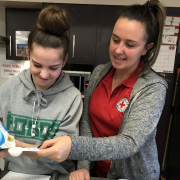Ideas for increasing productivity in healthcare and NFP
There are a number of ways healthcare and not-for-profit organisations can increase productivity and improve workplace engagement and happiness. But one of the biggest secrets to do this is actually: time outside of the office! Here are five steps to encourage relationship-building outside the workplace and the results you can expect to achieve.
Organisations that empower their people to deliver their best work continue to attract high-quality talent and boost productivity. Many healthcare and not-for-profit organisations design their workplaces to maximise productivity by offering things such as healthy snacks, the right tools and resources, and attractive employee spaces. While these perks are great and certainly contribute to a strong, productive working culture, but one of the biggest secrets in energising and boosting employee productivity is actually…time outside the workplace.
This might seem counterintuitive, as time spent out of the workplace is time not producing results; but research reveals that giving employees frequent out-of-office breaks doesn’t have to compete. In fact, providing consistent opportunities for people to walk away from their workspace and decompress, for example, in the form of an off-site lunch hour, yields higher rates of engagement and performance.
Furthermore, with employees spending more than 90 000 hours in their workplaces across their lifetime, team members who form strong friendships with their colleagues are more enthusiastic and productive in their jobs.
So, how can you promote interaction outside the workplace to boost productivity?
Designate a budget
Out-of-office activities takes thought, planning and a budget. So, “budget for bonding”, by including offsite activities as part of your financial planning. You will be sure to see return on investment as you grow your culture, foster meaningful workplace connections, and provide a change in scenery for stress relief.
Offer short off-site experiences
Consider designing short and frequent opportunities to interact. For example, pair your new hires with two or three people from different departments and provide them an off-site lunch during their first week. This helps both new and tenured employees get to know each other in a way they may not typically have the chance to.
You may also like to design a “co-worker coffee program”, allowing your people to take short breaks together outside the office (or even via video chats if you have multiple locations).
Offer team building
The end of the year is a great time to offer team building activities after your people have put in hard work all year long. From mini-golf, painting and bowling, to lawn bowls, barbeques or Christmas lunches, the opportunities are endless.
But don’t just stop with one end-of-year activity. Create frequent activities throughout the year. Quarterly events are a great way to build this strategy into your culture and create consistency.
Invite family and friends
Inviting your employees’ significant others, friends, family and children to events gives people the chance to integrate their personal and professional life, allowing them to feel more support and engaged in their work.
True leaders not only understand the value each employee can have on productivity, but also the sacrifices they make in being away from the significant people in their life. Celebrating family and friends gives your team members the chance to demonstrate their achievements with the important people in their life.
Use trial and error
Like all initiatives, encouraging your employees to interact outside the workplace may rely on some trial and error. Your organisation will have its own unique needs, so continue to learn as you go and tailor accordingly.
Creating opportunities for people to step away from work and recharge is a key component of supporting people to give their best and improving retention. So use creativity to design great experiences. Whether you offer co-worker coffees or quarterly team building events, you will see return on investment over the long-term. Offer offsite experiences, and watch engagement, productivity and happiness in your workplace soar.







